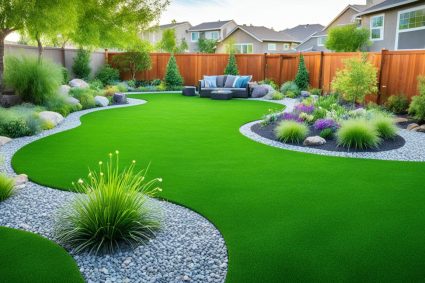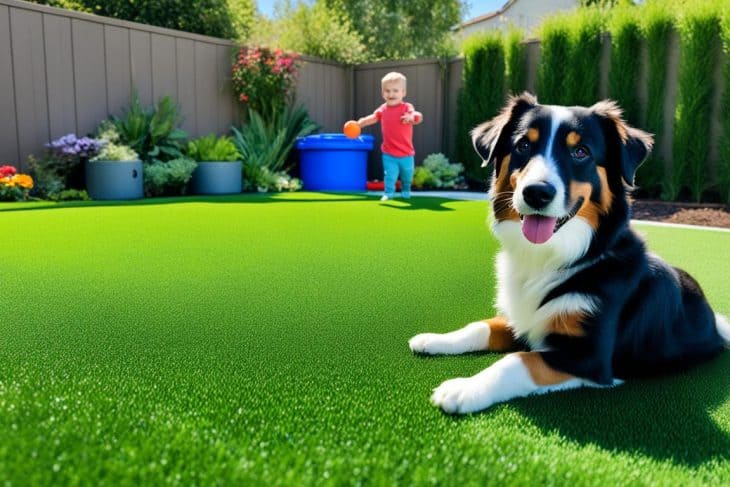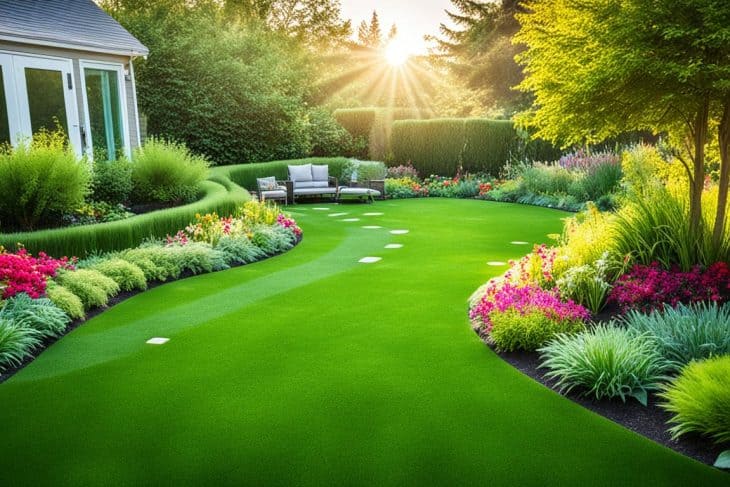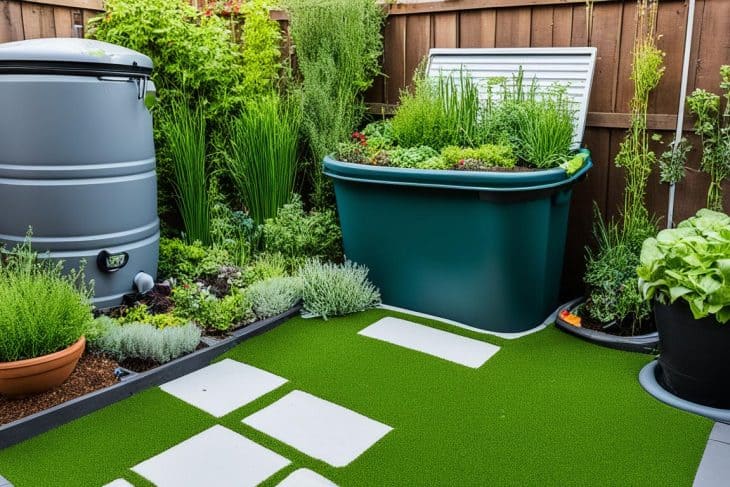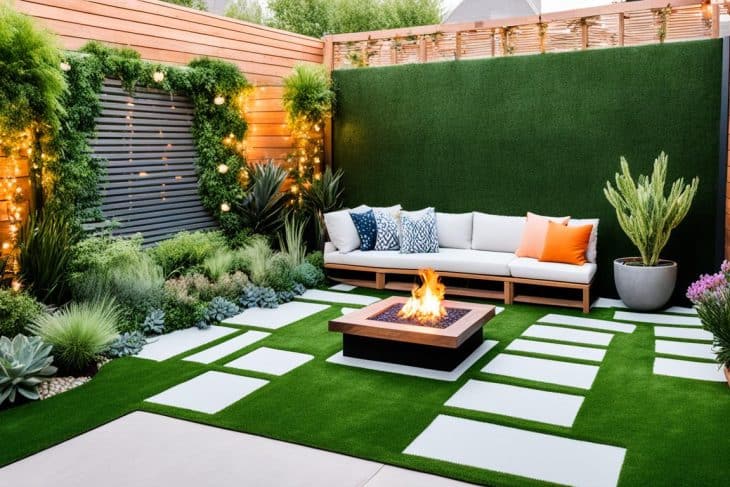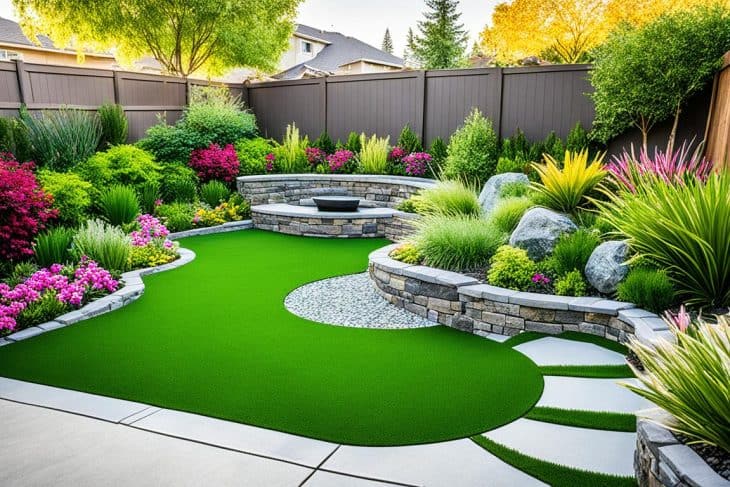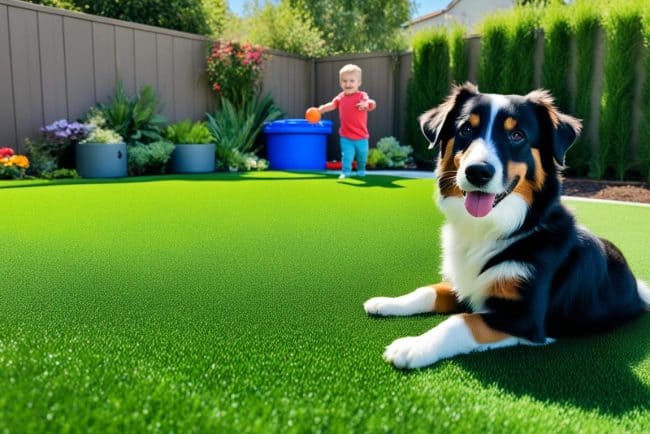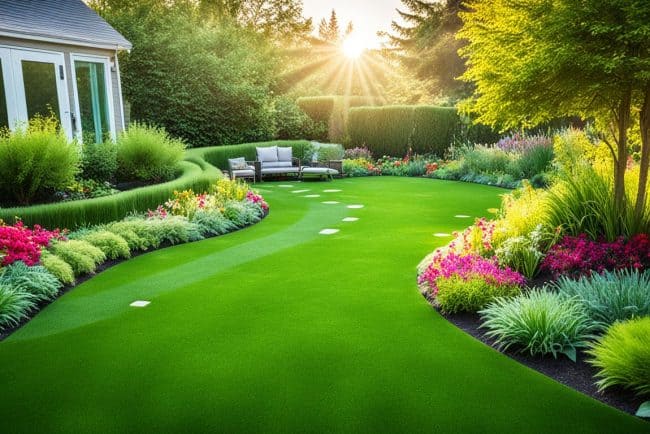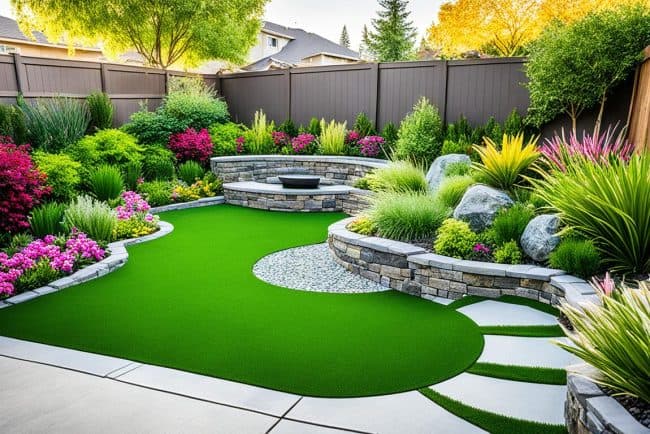
Did you know that using a gas-powered lawn mower for an hour is as bad as 11 cars running at once? This fact shows the big impact of traditional lawn care on the environment. Today, many homeowners, like me, are looking for eco-friendly lawn options. We’re moving away from normal grass care. It needs a lot of water, fertilizers, and mowing. Instead, we’re choosing sustainable landscaping that cares for our planet.
Choosing eco-friendly turf means I can have a beautiful yard that’s good for nature. There are many options like native plant gardens or low-maintenance covers. These choices help lower my environmental impact. In the next sections, I’ll explore sustainable options. They don’t need much care and support nature and conservation.
Understanding Eco-Friendly Grass Alternatives
Exploring eco-friendly grass alternatives shows their importance in saving our planet. “Eco-friendly” means they do little harm to the environment. These alternatives help reduce the use of harmful chemicals, save water, and increase plant variety.
What Does “Eco-Friendly” Mean?
Eco-friendly lawns use less water and avoid harmful chemicals. They might include mulch or gravel, which need little care. For example, moss looks great, needs less water, and grows without mowing or fertilizers. These choices are great for anyone wanting to reduce their environmental footprint.
Benefits of Choosing Sustainable Options
Choosing eco-friendly landscaping has many benefits. A clover lawn, for instance, adds nitrogen to the soil and attracts bees and butterflies. These options support local wildlife and even keep weeds away. They also help prevent soil erosion and make the environment healthier.
It’s useful to compare traditional and eco-friendly practices. Below is a table showing the benefits of each:
| Grass Type | Water Usage | Maintenance | Environmental Impact |
|---|---|---|---|
| Moss Lawn | Low | Minimal | Reduces emissions |
| Clover Lawn | Low | Low | Enhances biodiversity |
| No-Mow Grass | Very Low | Minimal | No pesticide use |
| Wildflower Meadow | No additional | Self-sustaining | Supports local fauna |
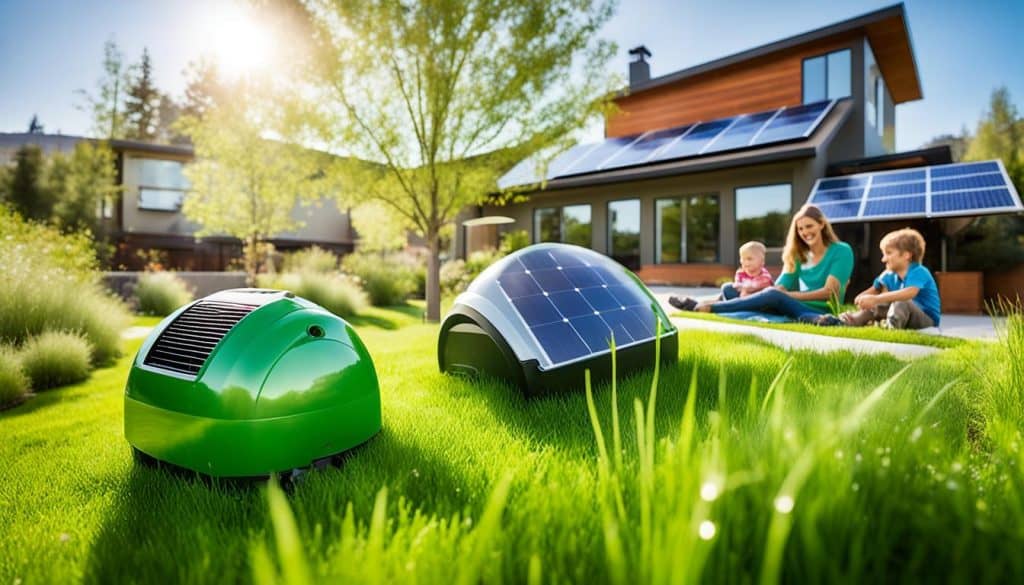
Learning about these alternatives can make our lawns more than just beautiful. It helps in our fight to conserve nature. By choosing wisely, we better the planet and enjoy a lovely, green space.
Sustainable Grass Options
Exploring sustainable grass options guides us to groundcovers and native plants. Both serve as top turf alternatives. They slash maintenance efforts and boost local ecosystems. Groundcovers need little care, look unique, and cut resource use. This makes them great for anyone who loves the earth.
Groundcovers as Green Turf Alternatives
Groundcovers like creeping thyme and clover are great if you’re ditching regular grass. They grow well with little water, stand up to stepping, and don’t need cutting. Creeping thyme fights drought, so it’s a win for dry areas. Clover makes soil better, needs no extra care, and stays green all year.
Native Plants for an Eco-Conscious Lawn
Using native plants in your yard helps local wildlife a lot. They’re used to the weather here, need less water, and no fertilizer. These plants give birds, bees, and butterflies places to live and eat. More and more, places like Montgomery County, Maryland, are making laws to keep lawns natural. This shows how vital native plants are for a green world.

Choosing groundcovers and native plants makes our gardens eco-friendly and full of life. This choice helps us use less water and chemicals. Our backyards then become mini sanctuaries for nature.
Creating a Wildflower Meadow
Changing your regular lawn into a beautiful wildflower meadow adds beauty and supports nature. You need to know how to do it and pick the right plants to be successful. This helps the environment and requires less work than traditional lawns.
Choosing the Right Wildflowers
Picking the right wildflowers is key to a great meadow. Plants like black-eyed Susans and purple coneflowers attract friendly insects. They help the local environment. Be sure to pick plants that do well in your area’s soil and weather. Watch out for plants that can take over, like bittersweet and Japanese knotweed. Keeping an eye on the growth during the first summer is important. This helps the native plants grow strong.
Maintenance Tips for Your Meadow
Once your meadow is set up, it doesn’t need much care. Mowing once a year keeps it healthy and supports different life forms. It may take 2-3 years for the meadow to fully grow. But the outcome is worth it. You can use methods like soil solarization and sheet mulching. This means you don’t need harmful chemicals. Knowing when to cut and clean up in September is key. This helps the meadow change and grow over the years.
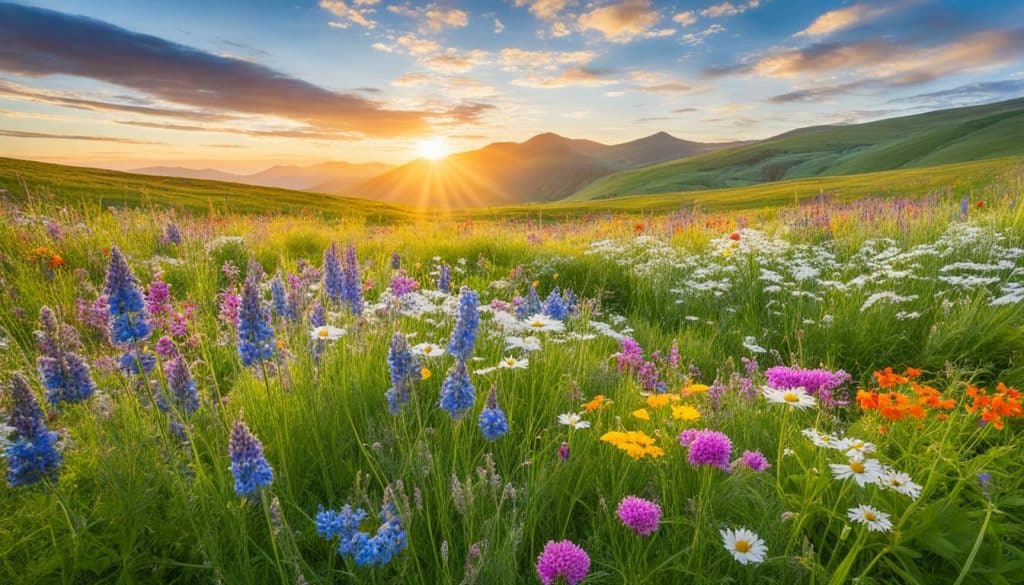
| Task | Timing | Purpose |
|---|---|---|
| Weed Monitoring | First summer | Control invasive plants |
| Mow | End of the growing season | Support biodiversity |
| Rake Cuttings | After mowing | Promote healthy growth |
| Soil Cultivation | Before planting | Prepare for sowing |
| Plant Native Wildflowers | Spring or fall | Establish habitat |
A wildflower meadow makes your space more beautiful and helps many species. Turning a lawn into a meadow can be hard. But, it’s a great thing to do for nature. It shows how much you care about the earth.
No-Mow and Low-Mow Grass Types
Looking into no-mow and low-mow grasses offers a green way to keep lawns. These grasses cut down on gas use, which is great for the earth. The Environmental Protection Agency says gas mowers make up 5% of the U.S. air pollution. No-mow grasses also need less water and fertilizer, which helps the planet.
For cold areas, hard fescue works well and costs about $50 for a 5-pound bag. This bag covers 1,000 square feet. White Dutch clover is another type that hardly needs any mowing. Using these grasses makes the environment better and saves energy on lawn care.
Buffalograss, like the UC Verde kind, is famous for needing little mowing and being cold-resistant. It only needs to be mown once a year in spring. This makes it a good choice for those looking for easy-care lawns. Zoysia tenuifolia is also great, needing only two mows a year. It keeps lawns looking good while saving resources.
Creeping thyme and blue star creeper are great low-mow alternatives too. They adapt well to different conditions. Mosses, like acrocarps and pleurocarps, need no mowing, turning bare spots green. Looking into these options shows that no-mow and low-mow grasses can make lawns beautiful and help the planet.

